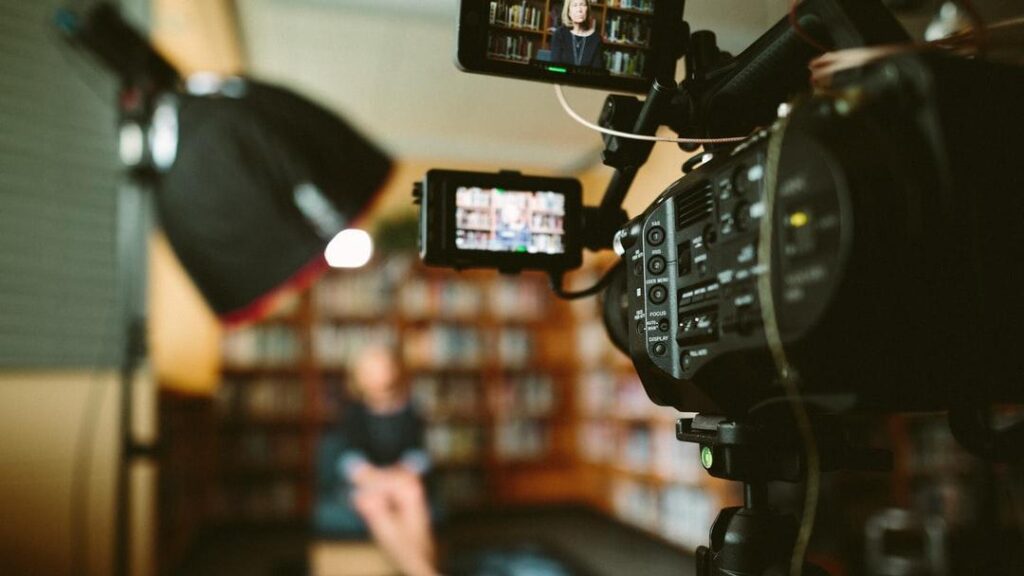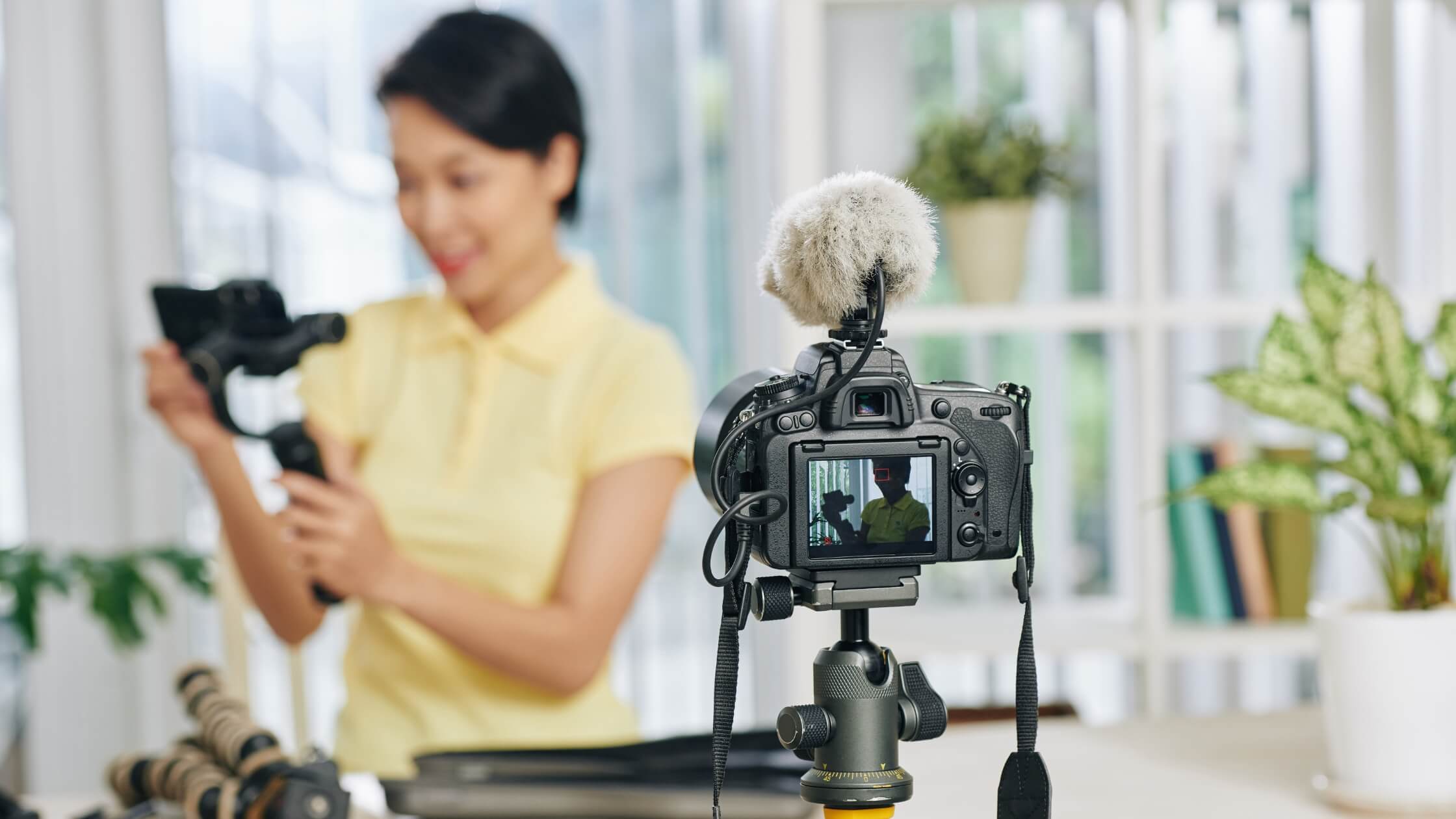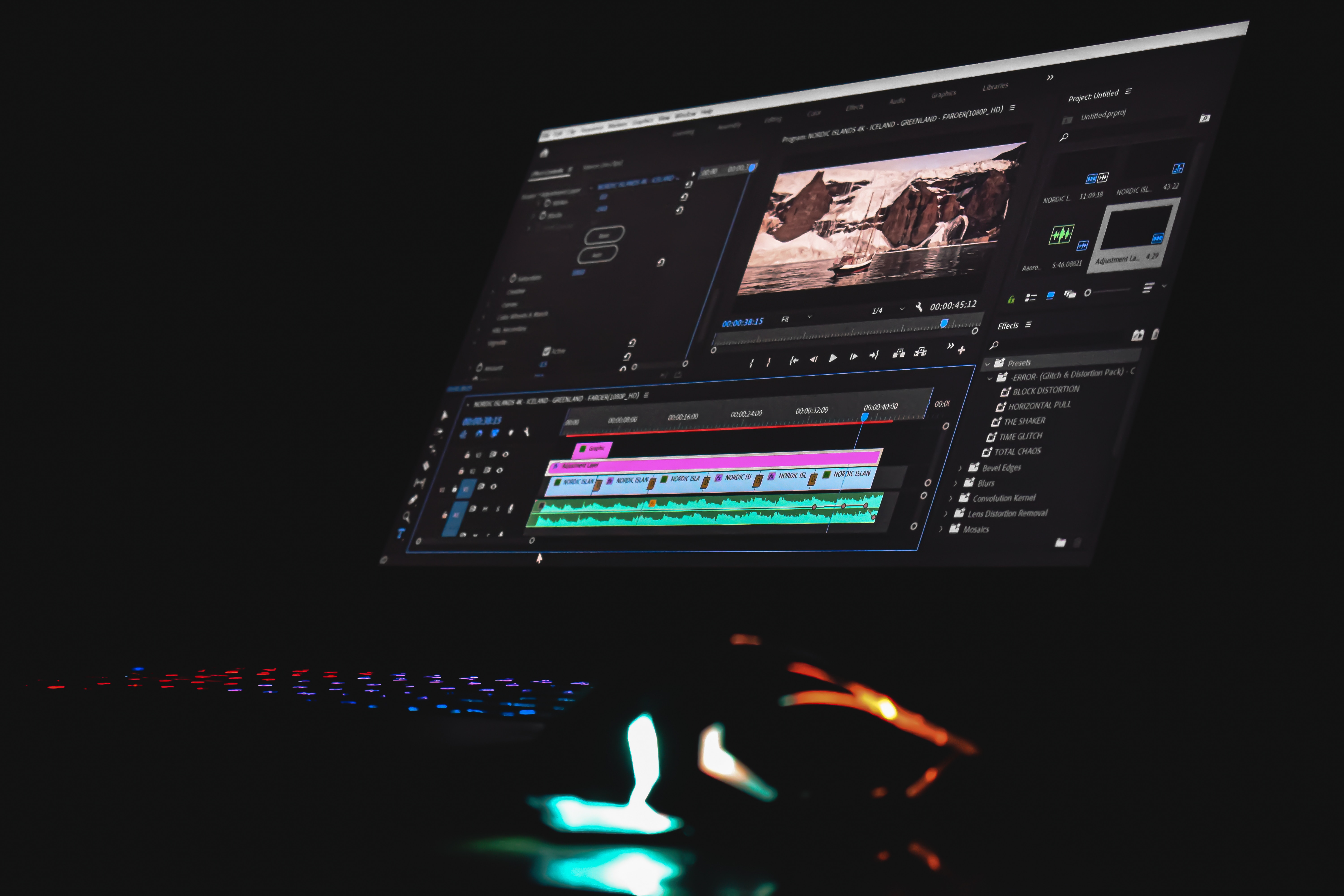If you're about to embark on a creative video project, it's important to be inspired, but it's also important to be methodical. So be sure to give this list of video production equipment a look and absorb its lessons well before setting out into the field!
What Is Video Production?
Video production is the process of making any kind of video content. That could mean an ambitious narrative project or a shorter piece that will live on a social media channel like TikTok.
The requirements for your shoot and the complexity of your project will dictate what you need to go out and make your video; during the height of the pandemic, remote video production equipment was more important than it is now, for example.
Still, you will need video equipment — and a good video production equipment list — to cover the phases of production, from planning and pre-production (admittedly, this usually just takes a pen and paper, or budgeting software if you prefer) to the shoot itself and post-production.
No matter the scope of your project, it's always beneficial as a video creator to be organized and prepared for any contingencies that might arise, and that includes having a video production equipment checklist you can rely on.
Video Production Equipment Essentials
Video equipment has certainly become more democratized since the days when film cameras were really available only to professionals and the most devoted students and amateurs. Now everyone has a camera on their phone. Still, with the right equipment, you can elevate the quality of your production and stand out from the crowd.
Cameras
Cameras are the most essential elements of video production. Whether you go with the aforementioned iPhone or Android option or opt for something more sophisticated will depend on the kind of shoot you're embarking on, as well as your project’s intended distribution channel.
If you're hoping that your short video project will go to festivals or possibly theatrical distribution and you have the budgetary means, consider upgrading to a Red, a Blackmagic, or a prosumer camera from a reputable company like Sony. There are so many types of cameras out there that you may want to look up some of your favorite touchstone projects and see what types of cameras they used to get the video quality you want.
If you're shooting at night or under verite conditions, you may want a camera that affords you the highest possible resolution that you can get (think 4K). A good lighting package is something to consider if you want to get the most out of your camera, no matter how cheap or expensive it is. Above all, you should consider the ultimate aesthetic you're going for. If you're looking to do a found-footage type of project, you may want less-than-pristine footage, which will also mean a more affordable camera package.
Tripods
Any shoot that doesn't involve shaky camerawork is going to need something to stabilize the image. If you're doing an interview shoot, for example, that probably means two cameras and two tripods. Video equipment can get more elaborate — you may need a dolly if you want to move the camera — but a tripod will give you a nice, stable, professional image.
Boom Poles
Audio quality is paramount. Yes, phones have built-in microphones, but the quality of that audio is far from broadcast-grade sound. Most audiences will forgive some shaky camera angles in an indie video production, but they want to hear the dialogue and sound effects of your video clearly. (Make sure to use a multichannel audio recorder so you can separate tracks later.)
Boom poles are extendable poles that can support shotgun microphones, which an operator can carefully position above actors to pick up their audio. Shotgun mics are directional and pick up actors' voices when aimed right at them. They can also be mounted on top of the camera. Using a boom mic is the most reliable way to get high-quality audio and block out ambient noise.
External Microphones
There are other ways to capture dialogue, chief among them being lavalier mics, which are small, discrete microphones you can clip to actors' lapels. These can be wireless, and they work better for situations in which your characters are stationary or wearing costumes that allow for easy disguising of the microphones. Similarly, they work for shots in which the camera is further away.
Of course, if you're filming an interview and don't need to hide your audio equipment, lavaliers are a popular choice. But they tend to pick up more ambient noise over a wide range than shotgun mics. They may also restrict the freedom of actors' movements in a way shotgun mics don't.
Make sure to capture your audio on as many tracks as you can on your digital audio recorder to give yourself maximum flexibility during the sound editing and design stages later on; a multichannel audio recorder will allow you to edit and mix later with fewer headaches, and you can clean up any audio that's less than perfect. The way your audio sounds will depend on a mix of your microphones (with the aim of recording good, crisp, clear audio) and how you use your soundboard and accessories to get the resonant quality you want. So take care at each stage of the process to find mics that have the quality you want — for example, warm and intimate — as well as the right size and functionality.
Zoom Lenses
The quality of your lens, as much as the quality of your camera, will influence the look of your shoot. You may prefer just a static lens (wide, standard, close-up, or macro), but a zoom lens can either give you a sensation of moving in closer to your image or let you simply reframe so you can get both a close-up and a wide shot with the same lens. Some videographers don't love the flattening effect a zoom lens can create. Still, a zoom lens is an excellent tool to have thanks to its versatility and ability to get close to the action without making you move the camera closer.
Lighting
As mentioned earlier, lighting will be crucial to getting an image that you're proud of. As with other equipment for video production, your lighting kit doesn't need to be elaborate. Many effective and striking high-contrast lighting looks (in which there is a great differential between the lightest and darkest parts of an image) can be achieved with minimal equipment and some intelligent planning. Traditionally in Hollywood, though, low-contrast lighting has been the desired goal. That's because soft, low-contrast lighting tends to be flattering to skin tones and doesn’t call attention to itself, allowing viewers to get absorbed by the movie they’re watching.
For classic Hollywood three-point lighting, you need a key light, fill light, and backlight. The key light gives you basic illumination; the fill light, angled from the other side of the subject, provides a pleasing and softening fill so that your subject’s features don't seem too sharp (you are probably happier with photos of yourself in lighting situations like this!); and the backlight provides a nice rim of light that separates your subject from the background, giving a wonderful sense of depth to your image.
You can achieve this without the most expensive production lights: In a pinch, a paper Chinese lantern gives nice, diffuse lighting. LED lights are also popular among videographers for their quality and the fact that they do not get nearly as hot as old-fashioned lights, making for a far more comfortable shoot for everyone involved.
If you're shooting outdoors in natural light, you may want to consider purchasing some diffusion and bounce material, which helps give consistency to the lighting over the course of the day. And be aware of sunset, and how much light you have to work with. Of course, magic hour (roughly the half hour or so before the sun actually goes down) provides the most beautiful golden light — unlike Terence Malick, though, you may not be able to shoot an entire project using the available light during magic hour, so consider how you can augment it and make use of the resources you have to make your project as good as it can be.
Video Editing Software
There are many good (and even free) sources of video software out there, including DaVinci Resolve, Adobe Premiere, Final Cut Pro, and a slew of others. Spend some time getting familiar with them and go with the one you feel most comfortable with, setting up your editing studio to maximize your comfort and productivity.
Most video editing software is compatible with any hardware you'd use, but (for example) Blackmagic cameras and DaVinci Resolve are made by the same parent company, which can make your workflow more efficient. DaVinci can be used for color grading as well. If your video studio is a lean operation, you should be looking for ways to streamline your process, so the less time spent converting footage formats, the better.
Do You Have Everything You Need for Your Next Shoot?
Video production is at once more available and simple than ever before, and also more complex (sometimes it's about having an artistic vision, and sometimes it's about remembering to bring some extra batteries and the right audio cables). If you have a good idea, that's step one!
After that, just make a comprehensive list of all the things you need and move down that list methodically and calmly. Don't get flustered. And don't forget the music, which brings life and soul to any project, no matter how small. Stockmusic.net has you covered with excellent music that's also royalty-free. Reach out today to give your project the polish it needs!






Pingback: How To Enhance Video Quality: 9 Best Practices